An introduction to reloading- Part 3
It is obvious, that you won’t be able to reload without a workshop. But it’s not just about the tools and the way you arange them around your working place. It is also about knowing how to use them in the right way.
It is impossible to reload without tools and their quality (and condition!) directly translates into the repeatability of the assembled cartridges.
However, in the euphoria that often accompanies the first steps of a handloader, one must not forget that it is the knowledge of safety rules, the ability to properly combine components and awareness of the course of individual operations that will ultimately determine success or failure.
Knowledge is key
First thing an adept of the art of reloading must invest in is knowledge. The best teacher is an experienced colleague. He will not only provide the fastest answers to bothering questions, but above all, will demonstrate particular activities. It is worth making the first steps under the supervision of such a person - it will make it easier to spot errors that are almost inevitable.
I recall my first, completely unsuccessful attempt to fire the first ten round I made. None of them worked, what a bummer! My excitement and rush prevented me from completely drying the scales I had prepared (unintentionally, but still). As it turned out later, the water that remained in the primer holes wet the primers and the firing pin could strike as much as it wanted. In vain. Haste makes waste! - commented my friend when I told him the story of my failure. I am sure if he'd been standing over me at the time, there would probably have been satisfaction instead of shame. Besides that one "minor" flaw, the cartridges were good...
The advice of even the most experienced colleague will not replace reading textbooks. There are a lot of them in stores - it's worth buying and reading them. Also in the manufacturer's manuals there is a lot of advice and rules, it's another good source of knowledge. The more so that the source information of the manufacturers of gunpowder and bullets is indispensable, and you have to have it anyway.
Take the Norma reloading manual for instance. It contains lists of bullets with their respective powders. The compositions are presented in tabular form, for each combination there is an indication of the weight from which you can safely begin - called the starting load and the maximum load - which must not be exceeded. For both, the velocities and pressures achieved for the test barrel are given. In addition to the allowed load ranges, other important data are published - the acceptable overall length of the cartridge (OAL), the length to which the case should be shortened (trim length) and usually also the history and properties of the caliber. This data is preceded by a theoretical introduction, discussing the basics of reloading, rules for storing powder and primers, tips on shooting, etc.
Once again, only the data taken from component manufacturers can be a reliable basis for creating your own cartridges! Using information obtained in simulation programs or found on websites or Internet forums without verifying it with data from the manual is risky!
The tools for reloading
Reloading equipment can be expensive. Manufacturers offer countless tools - from essential to those that are used on rare occasions. It is worth remembering that usually at the beginning of the adventure with reloading, the actions taken should be narrowed down to the necessary ones. This will cover the basics and help mastering the skills step by step, gradually leading the handloader to the top of the craft. With time – many of these tools will be replaced with more advance ones. Some will be kept however – I still use many of those basic/affordable ones I bought almost 20 years ago. They continue to work perfectly and I can’t see any reason to replace them. On the other hand, many shooters are determined to reload at the highest level from the very beginning. They have the right budget for this and would not want to go through the infancy phase (which is actually not a bad thing in my opinion). But – if they prefer to get their target equipment right away, why not? Therefore, I will make two shopping lists: the bare minimum and an “all-in” one.
Minimal equipment
The cheapest way to go is usually to buy a kit containing the necessary tools. The leader in this category would IMO be the Lee company, whose policy for years has been to offer good tools as cheaply as possible. Often, competitors' products are or appear to be better in various aspects (almost always you have to pay more for them), but the resulting benefits are not always that obvious. For a price of just over 250EUR, the workshop will be equipped with:
- An “O-type” press, i.e. with a closed frame, which gives the necessary stiffness
- Powder measure, adjustable by volume
- A mechanical scale with 0.1 grain accuracy
- Antistatic funnel for pouring powder into the case
- Universal brass trimmer
- Chamfer tool
- Priming tool
As an obvious extra, you would need the appropriate caliber dies (about 50EUR). There is also no equipment for cleaning the brass, but one could argue if in the bare minimum plan they are necessary. The main goal is to keep the contact surfaces of brass clean. With small quantities it is enough to clean the outer surface (steel wool and cleaning agent) and to use a brush for the inside of the neck area. That being said – I can’t imagine not buying a cleaning tumbler or an ultrasonic bath sooner or later.
Complete equipment for reloading
To be honest, I don’t believe there is a limit to what you can get and there is no such thing as a maximum plan. There will always be an even better tool - more efficient, precise, ergonomic, etc. Nevertheless, there are many things you could add or replace in the list above and enjoy accuracy, repeatability and comfort at the highest level.
So what modifications had to be made to the minimum plan?
1. A heavier and stiffer press. It's about both stability and rigidity during operation, but also repeatability of bullet seating. There are many great presses among the popular products such as Forster CO-AX, Hornady Iron, Redding Big Boss, RCBS Rock Chucker, Lyman Crusher, not to mention progressive presses that perform several operations at once (and cost at least as much as the entire set listed above, often many times more)
2. Equipment for brass cleaning – a dry or wet tumbler (depending on preferences) or an ultrasonic bath, additionally cleaning agents (mechanical or chemical)
3. An automatic scale - in which you can program the weight, the pouring speed
4. Neck sizing dies, preferably with bushings, which will limit the actual reshaping operations to the necessary minimum (increases the lifetime of the shells, improves accuracy and reduces the force needed for formatting) and additionally a body die
5. High quality sizing dies – individual manufacturers use their own, patented ways to increase precision. These products are usually labeled "bench rest" or "match"
6. Electric case trimmer
7. Various measuring tools (headspace, OAL, concentricity gauges, various indicators and comparators etc)
8. Chronometer to verify the actual muzzle velocity
9. Computer programs to support reloading, ballistic calculators, e.g. Quick Load
It is impossible to list all the tools, in order to do that separate articles devoted to individual issues would be required. However, it is easy to see that the maximum plan starts around 2000 EUR and sky is the limit.
My personal approach was to start small. I bought the cheapest set and mounted the press to a piece of wooden board I could later mount to the kitchen table with a clamp. Handloading seemed mysterious and complicated to me and I had doubts if I could handle it, so I didn't want to spend too much money at the beginning. It soon turned out that I was completely hooked on it, and I replaced the press and scale with higher-end tools. I acquired a tumbler, an electric trimmer and a few other tools after some time. However, I still use some tools from the first set I bought 20 years ago (priming tool, funnel, shellholders). For many years I used a mechanical scale, bought second hand – and really enjoyed the feeling of a personal, manual influence on every step. Switching to an automatic scale made it much faster and convenient, especially for bigger batches of ammo, although I had a feeling of being slightly disconnected to a part of the process.
More expensive equipment is usually more comfortable and precise – it is not a must for the majority of the tasks, but for large quantities or when pursuing the highest accuracy, you will definitely benefit from it. .
The biggest improvement without any doubt was finding a suitable place in the house for the workshop. I could arrange space for reloading purpose only, where I would have all my most important tools attached in the right, convenient places and spend time in comfort for hours at a time.
Space for reloading
Reloading is a time-consuming passion, so it is worth designing a workplace where you will spend many hours in comfort. Improper organization of the workshop will not only worsen ergonomics, but may contribute to mistakes made during the assembly of cartridges. Therefore, make sure that there is enough space on the table for a manual and notes (or a laptop) that are used during work, at least one tray with shells, a box for finished cartridges. I suggest placing the mechanical scale on an independent shelf, preferably high enough to see the indications clearly. The base (shelf, table – or any other platform) has to be perfectly leveled in all directions - any deviations will result in a measurement error!
The tabletop to which the press is attached must be stable and durable – I prefer to have a separate one from the general desk for that. Shell sizing sometimes requires the use of considerable force - that is why the table should be permanently attached to the floor. Naturally, all recommendations from the work safety and health category regarding lighting, furniture arrangement that allows you to take the right position, etc., are adequate. First of all, you should be allowed to focus on what you are doing.
Having an equipped workshop and basic knowledge in your head, you can go for the first purchase of components. Here, too, I suggest beginning with a humble setup: one caliber, one powder, and one kind of projectile to start with. Then the quest for the perfect combination – so called sweet load - can begin. Sometimes it can be found very quickly, but on many other occasions the road is long and winding. That’s not a bad thing though, for many of us reloading is an art of chasing the rabbit, not exactly just easy way to catch it.
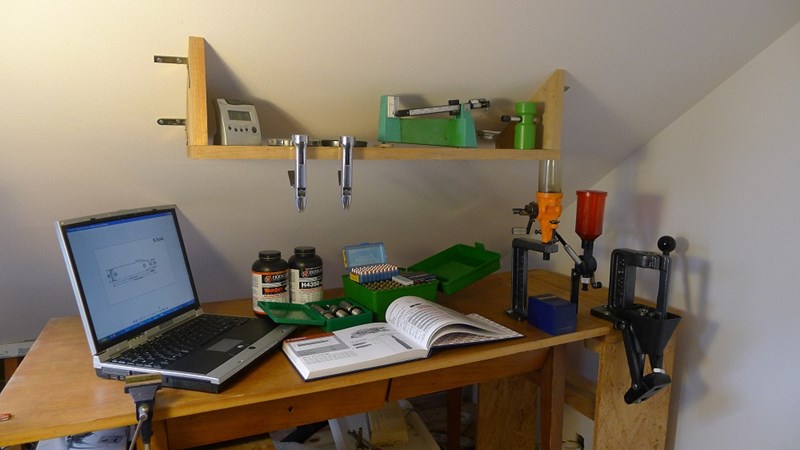
My old, basic reloading studio
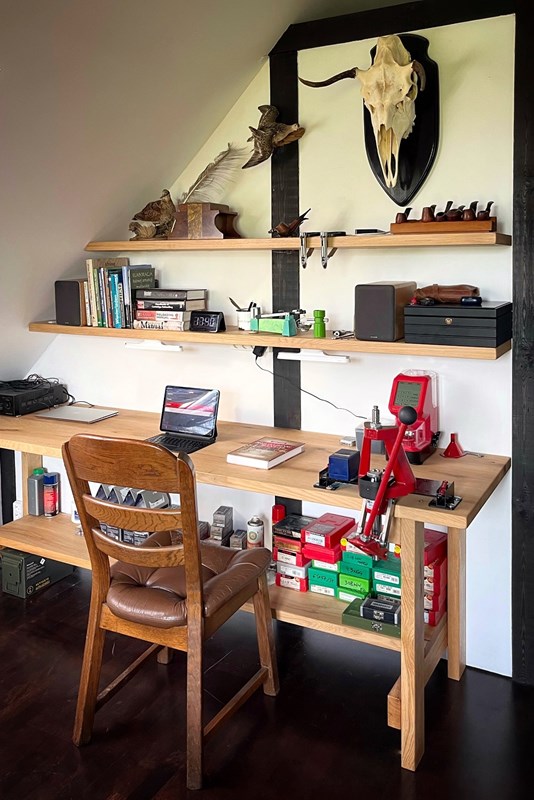
New one with much more space, some new tools, a few upgrades but still some of the old, basic equipment still work
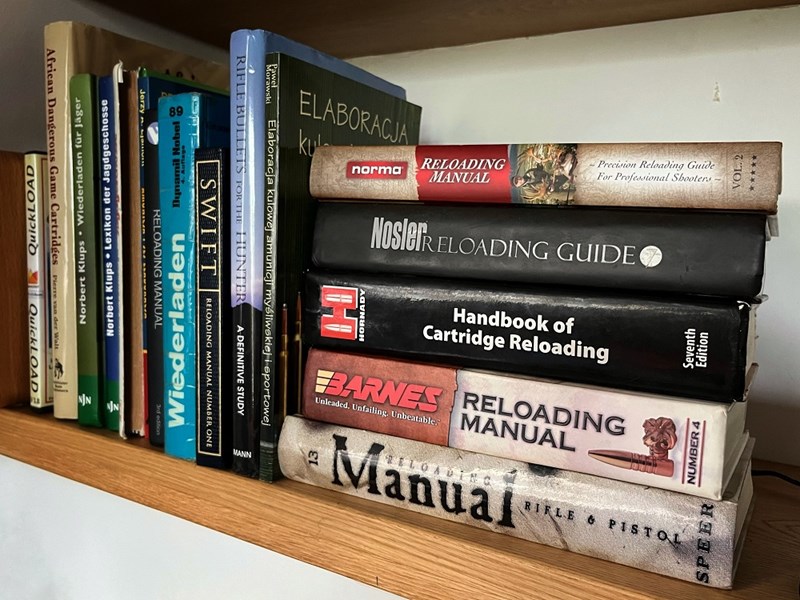
Knowledge is key: books and manuals are the source of information for reloading
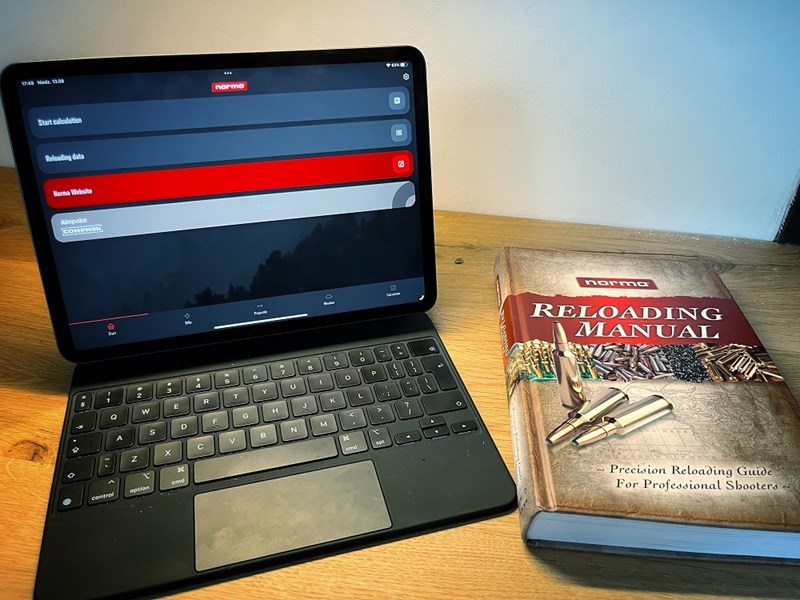
NORMA provides both printed and online information
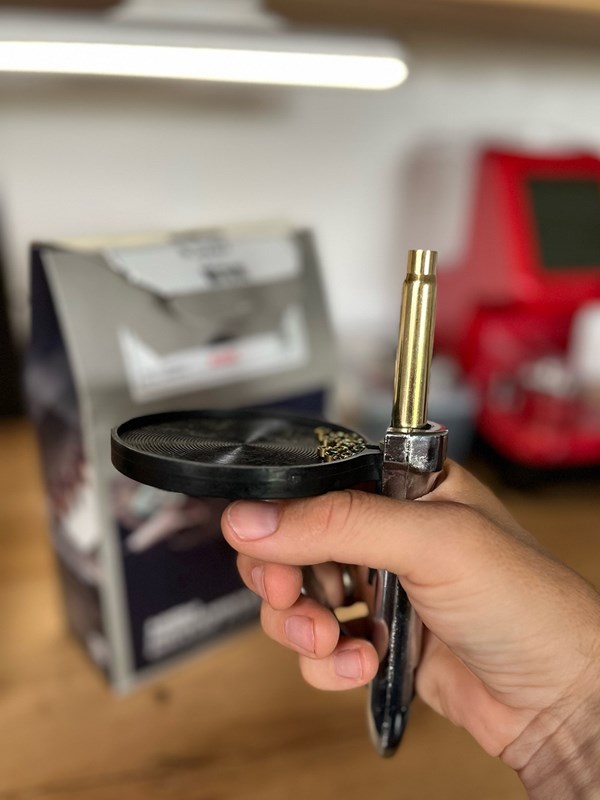
This basic priming device is probably 15 years old - still works perfectly
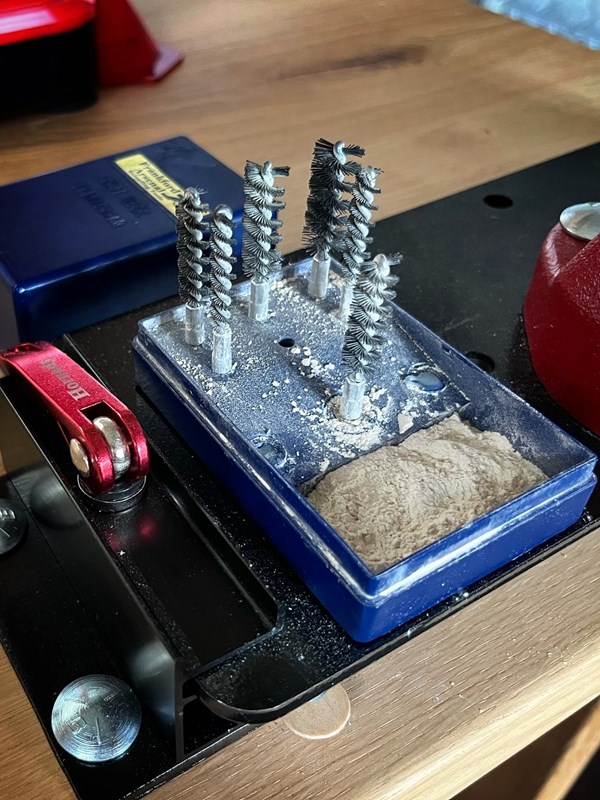
Some small and inexpensive additions make the work easier - here brushes and grounded mica for brass dry lubrication before sizing
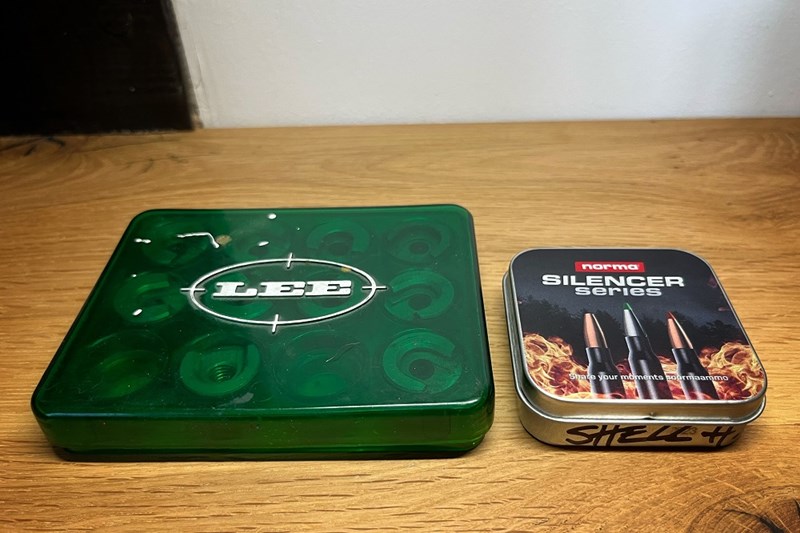
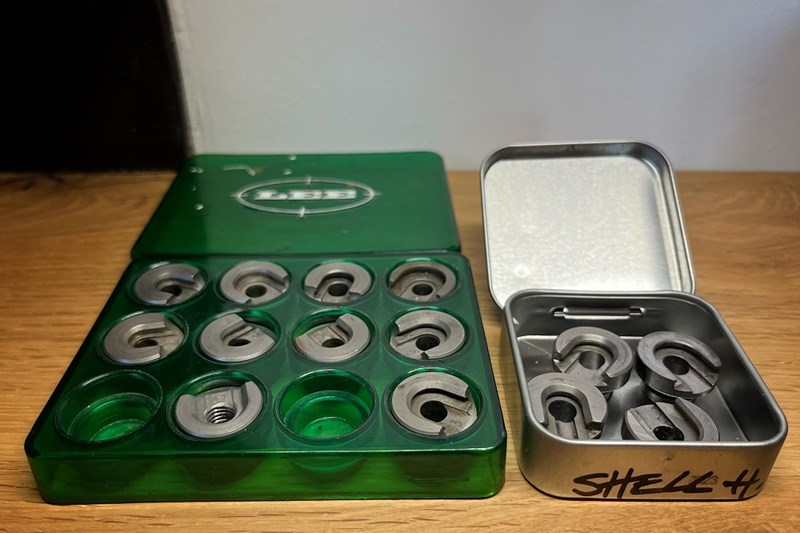
I like to keep the frequently used shell holders separately
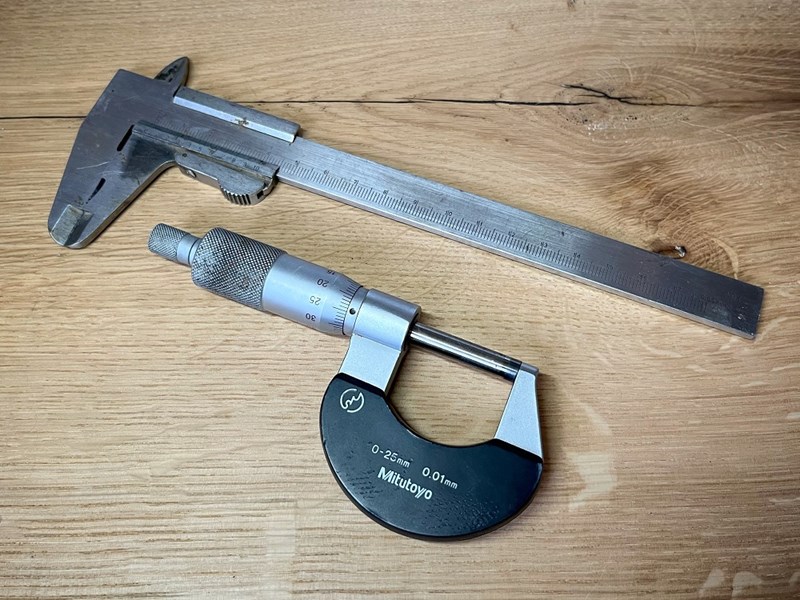
Measuring tools are a must!
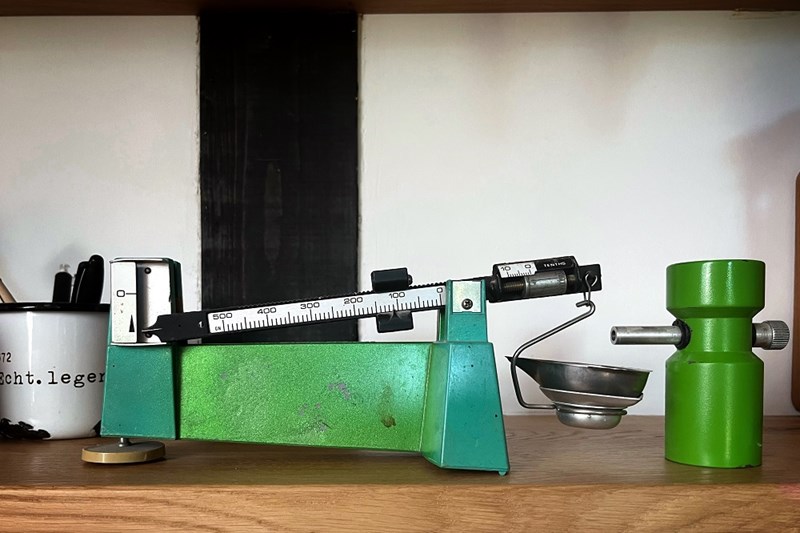
An old school scale with a trickler is a very precise combo (a slow one though)
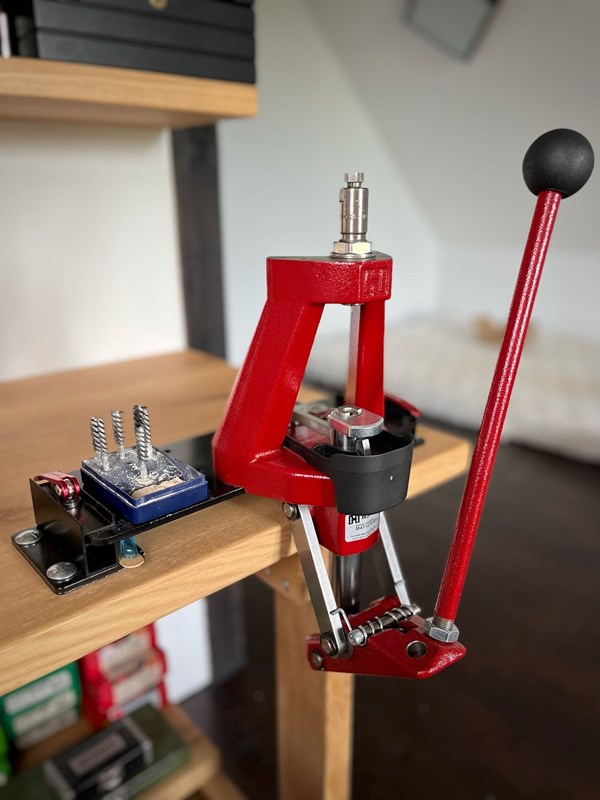
A heavy and sturdy press is probably the most important purchase
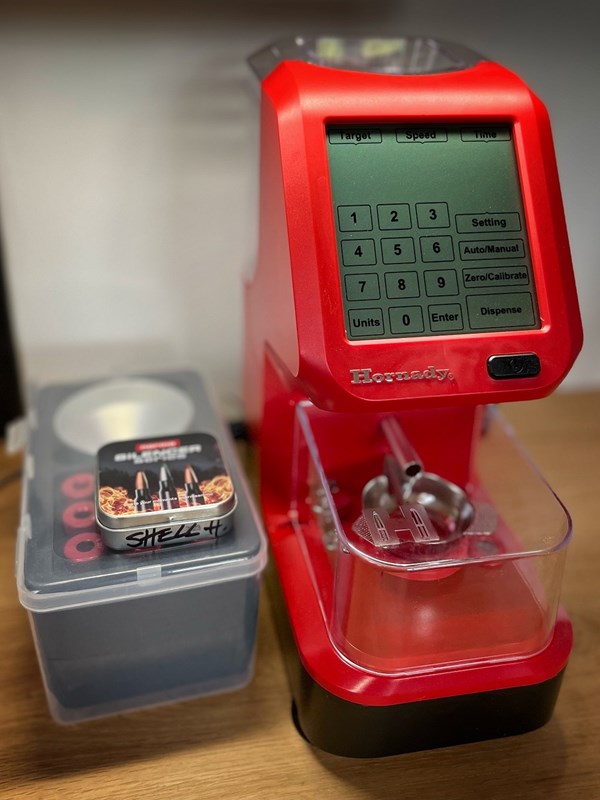
An automatic scale makes the weighing process fast and easy